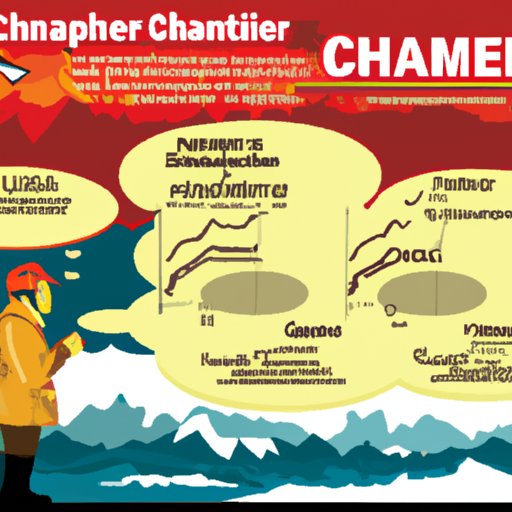Introduction
The climate is a complex system that is influenced by a range of natural and human-driven factors. While the long-term effects of climate change have been studied extensively, short-term climate change can also have significant impacts on our environment, economy, and society. Short-term climate change typically refers to variations in temperature, precipitation, and weather patterns that occur over a few decades or less.
Understanding the causes of short-term climate change is essential for predicting and adapting to its impacts. In this article, we will explore the various factors that contribute to short-term climate change and the potential solutions to mitigate its effects.
Human Activities
Human activities are the primary cause of short-term climate change. The burning of fossil fuels, deforestation, and industrial processes all contribute to greenhouse gas emissions that trap heat in the atmosphere and increase global temperatures.
Burning fossil fuels, such as oil, coal, and gas, releases carbon dioxide and other greenhouse gases into the atmosphere. These gases trap heat from the sun and lead to an increase in global temperatures. The effects of fossil fuel combustion are compounded by deforestation, which removes trees that absorb carbon dioxide from the atmosphere, and industrial processes, which release additional greenhouse gases.
Natural Causes
Natural causes also contribute to short-term climate change. Volcanic eruptions, solar radiation, and ocean currents all impact the Earth’s climate system.
Volcanic activity can inject particles and gases into the atmosphere that reflect sunlight and cool temperatures. However, the effects of volcanic activity are typically short-lived, lasting only a few years.
Solar radiation plays a significant role in regulating the Earth’s temperature. However, small variations in the amount of solar energy can lead to climate variability over short periods.
Ocean currents influence regional climate variability and can cause fluctuations in temperature. El Niño and La Niña, for example, are ocean temperature patterns that can impact weather patterns worldwide.
Land Use Changes
Land use changes, such as urbanization and agricultural practices, also contribute to short-term climate change.
Urbanization leads to changes in land cover and increases the amount of heat absorbed and retained by cities. This effect is known as the urban heat island (UHI) effect and can influence local climate patterns. Agricultural practices also lead to changes in land cover and increase greenhouse gas emissions through the use of fertilizers and other inputs.
Atmospheric Changes
The increase in greenhouse gases is one of the most significant factors contributing to short-term climate change. Greenhouse gases, including carbon dioxide, methane, and nitrous oxide, trap heat in the atmosphere and contribute to global warming.
In addition to greenhouse gases, atmospheric pollution can also contribute to short-term changes in weather patterns. Polluted air can reduce the amount of sunlight that reaches the Earth’s surface and lead to cooling in some regions.
Climate Variability
Climate variability refers to short-term variations in weather patterns that occur over time frames ranging from months to decades. These variations differ from long-term climate change, which refers to changes that occur over centuries or longer periods.
Regional variability of the climate system can impact local weather patterns and lead to short-term climate change. For example, changes in sea surface temperature can influence precipitation patterns and trigger droughts or floods in certain areas.
Extreme Weather Events
Short-term climate change can lead to extreme weather events, including heatwaves, droughts, and floods. These events can have significant impacts on communities and ecosystems.
Heatwaves can lead to dehydration, heat exhaustion, and even death in vulnerable populations. Droughts can lead to crop failure and food insecurity, while floods can cause property damage and displacement.
Solutions
There are several potential solutions to mitigate the effects of short-term climate change. One solution is to reduce greenhouse gas emissions through the use of renewable energy, energy efficiency measures, and sustainable transportation.
Individuals can also take steps to reduce their carbon footprint, such as reducing energy consumption, eating a plant-based diet, and supporting policies that promote sustainability. Additionally, land-use practices can be modified to reduce emissions and enhance carbon sequestration.
Conclusion
Short-term climate change has significant impacts on our environment, economy, and society. The causes of short-term climate change are complex and influenced by a range of natural and human-driven factors. However, through individual and collective actions, we can mitigate the effects of short-term climate change and create a more sustainable future.
We must recognize the urgency of addressing short-term climate change and take action to reduce our carbon footprint. By working together, we can protect our planet and ensure a livable climate for future generations.
